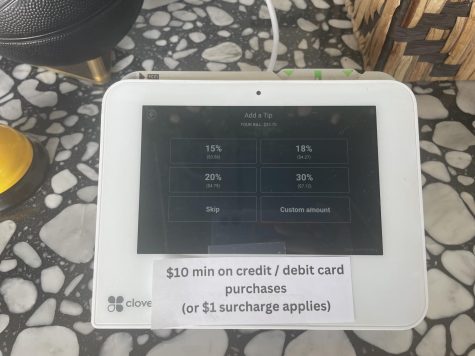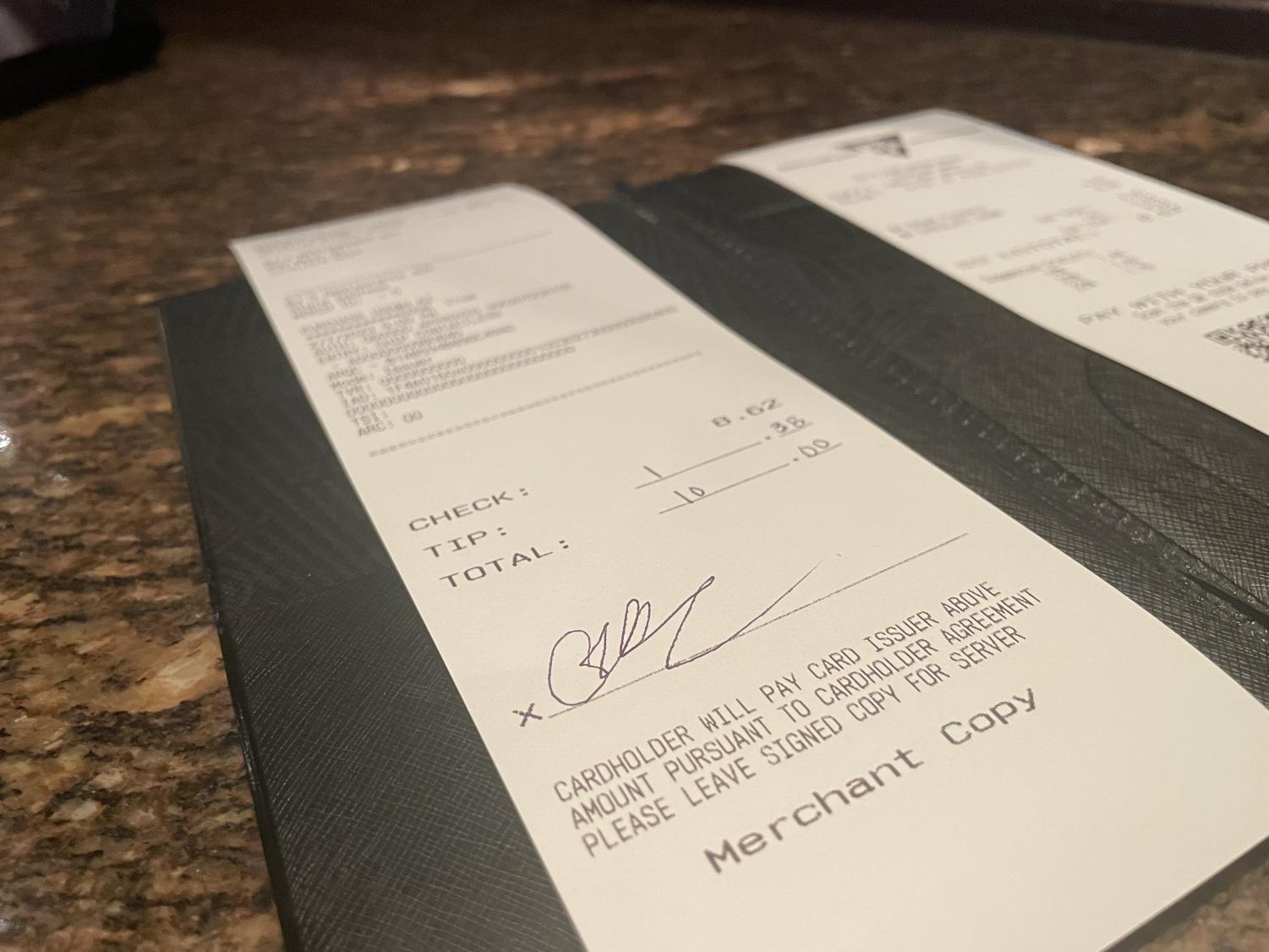The Tipping Norm in America
February 8, 2023
Many American servers rely on their tips as a main source of income, leading many people to accept minimal amounts. It has been debated for years whether or not tipping is an ethical way of making money. In other countries, tipping is not mandatory, but will still be accepted as a kind gesture. So the question is, why is there such a strong tipping culture in the United States?
In California, the minimum wage is $15.50 as of 2023. However, in other states, the wages can even go as low as $2.13, following the Fair Labor Standards Act. The Fair Labor Standards Act decides how minimum wage, overtime pay, and youth employment should be established within private sectors. Servers, depending on the state they live in, can still make $2.13 an hour simply because they get paid with tips.
18 out of 50 states go by federal law. In these states, servers have to rely on tips to survive. Typically, customers will tip 15-20% at restaurants, therefore, the larger the bill, the larger the tip should be.
Huntington Beach High School (HBHS) senior Megan Nguyen says, “I always tip whenever I go out to eat. Sometimes I’ll even tip the cashiers when I go get boba or get Starbucks.” Even fast food restaurants started adding tip options at the register when you pay.

Many people are against tipping fast food or drink restaurants because of how casual these places are. Nowadays it is very normal to see a 10-25% tip option at the registers after you order your food or drink. Many people feel pressured into tipping as the worker is standing in front of them, waiting for their choice.
Marina High School senior, Rachael Tran said, “I often feel forced to tip the fast food workers because I can feel them awkwardly staring at me waiting for me to pick how much I should tip. In my head, I want to click no tip, but then I feel bad and end up tipping. It creates a very uncomfortable environment.”
The other argument is that tipping workers has become utilized to reward good service, making it not mandatory to tip. Most tippers tip on the basis of how well they were treated, therefore spending more money the better the service was. Depending on how well the customer thought the service was, will be how much they believe the server should be tipped.
At the same time, this has opened up opportunities for extra harassment and favoritism between servers and customers. In the restaurant industry, there are 5 times more sexual harassment claims per worker than in any other work industry. There is a large power imbalance considering the fact that the typical tipper is male and 70% of servers are female.
In a survey conducted in 2014 by Restaurant Opportunities Center United, 90% of workers, both male and female said they had experienced sexual harassment in their workforce. The tipping system has also caused a more consistent racism issue. Servers who are people of color tend to make less money in tips than white people.
Younger high school students also argued that the age imbalance also has a large impact on how much they tip. Younger people have a harder time tipping servers appropriately because they do not have the money to do so. Another argument is that some may not even know how to properly tip the right amount.
Jamie Adams, HBHS junior student said, “I hardly ever tip at restaurants because I don’t have a job to earn my own money to tip workers. I already have school and dance, making it harder for me to work. I was also never taught the right etiquette of tipping.”
Arguing against this, Nguyen said, “If you don’t have enough money to go eat out, just don’t go out at all. Servers have to rely on your tips so tipping nothing can seriously impact them.”
Overall, Americans are divided between the proper etiquette for tipping: tip to reward service, always tipping under any circumstance, or not tipping at all.

